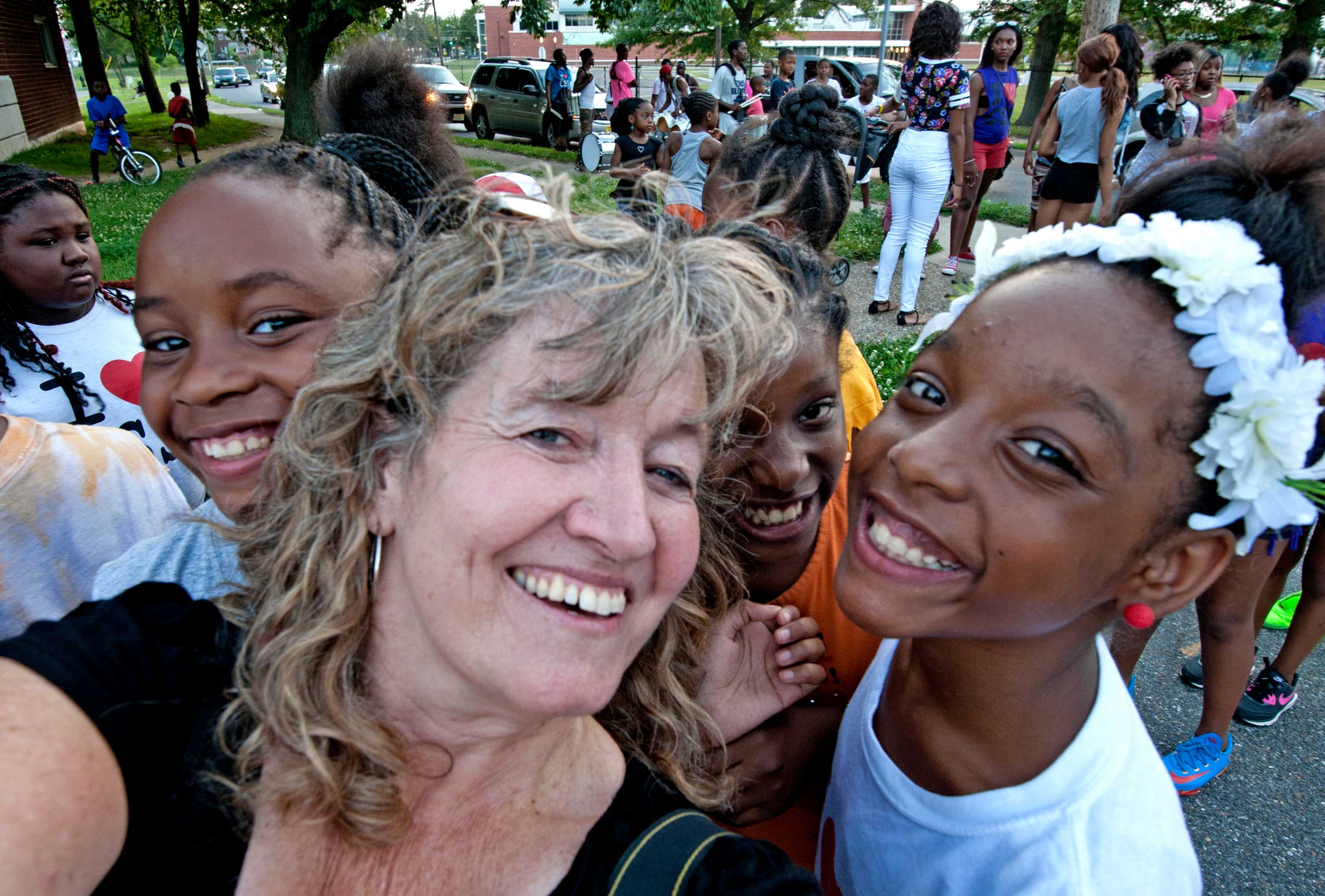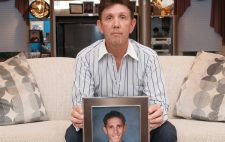Sitting in an abandoned house taking pictures of prostitutes shooting up is just another day in the life of April Saul. The Philadelphia Inquirer photojournalist is spending a year chronicling life in Camden. Her photos are gritty, moving and, at times, haunting.
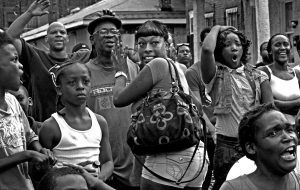 “I have always used photojournalism as a way of helping people understand each other better,” says the Haddon Heights resident. “There’s no place more in need of understanding than Camden. I want to bring awareness to the fact that the people in Camden are people too, and they’re doing the best they can. A lot of people who aren’t familiar with Camden see it as very stark, depressing turf. I don’t see it that way.”
“I have always used photojournalism as a way of helping people understand each other better,” says the Haddon Heights resident. “There’s no place more in need of understanding than Camden. I want to bring awareness to the fact that the people in Camden are people too, and they’re doing the best they can. A lot of people who aren’t familiar with Camden see it as very stark, depressing turf. I don’t see it that way.”
Saul’s inspiration for the project came in 2006 when she was covering child murders. “I decided I would do a column about every child killed by guns in the Philadelphia area for a year,” she recalls. That year, Saul wrote about 24 murdered children between the ages of 3 and 17.
Fast forward to 2011 when Saul covered another shooting of a 9-year-old child, Jorge Cartagena, who was hit in the head by a stray bullet. Though he was left blind, Cartagena survived and had a huge impact on Saul.
“It was amazing to be able to meet a kid who had survived and who I could actually help,” she says. “The coverage helped him find a better home in a safer neighborhood, and that was the most satisfying outcome imaginable. That’s the holy grail for me – to be able to make an impact in people’s lives.”
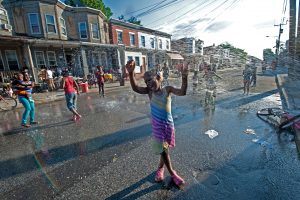 Not all of her pictures show the dark side of Camden. “People can accept sad and tragic things if I also show them joyful ones,” she says. One of her favorite inspirations is Tawanda Jones, who mentors kids through the Camden Sophisticated Sisters Drill Team, a nonprofit that empowers kids through dance. Last year, Jones’ group flew to California to appear on “Dancing with the Stars” and later received a video message from Beyoncé acknowledging their hard work.
Not all of her pictures show the dark side of Camden. “People can accept sad and tragic things if I also show them joyful ones,” she says. One of her favorite inspirations is Tawanda Jones, who mentors kids through the Camden Sophisticated Sisters Drill Team, a nonprofit that empowers kids through dance. Last year, Jones’ group flew to California to appear on “Dancing with the Stars” and later received a video message from Beyoncé acknowledging their hard work.
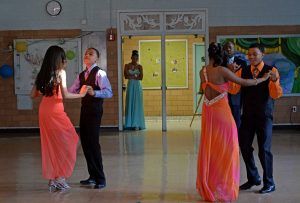 “During practice, some of the kids started crying, and it grew in a wave,” says Saul, recalling her first visit to the moldy water tower in Camden where the group meets. “They had to stop rehearsing, because so many children were weeping. The father of one of the members had been killed, and that day the police had arrested the murderer. The young daughter started crying, and for a lot of the kids, it probably brought up losses they’d suffered. Out of empathy for their drill teammate, they all grieved. Then they got back up and started dancing again. One of them explained to me that they dance away the pain.”
“During practice, some of the kids started crying, and it grew in a wave,” says Saul, recalling her first visit to the moldy water tower in Camden where the group meets. “They had to stop rehearsing, because so many children were weeping. The father of one of the members had been killed, and that day the police had arrested the murderer. The young daughter started crying, and for a lot of the kids, it probably brought up losses they’d suffered. Out of empathy for their drill teammate, they all grieved. Then they got back up and started dancing again. One of them explained to me that they dance away the pain.”
Saul accompanied the group to California for their Dancing with the Stars appearance. “I wanted to see what it would be like for these kids to do that,” she says. Following her heart is not unusual for the photographer, who admits she often becomes emotionally involved with her subjects. “I am not a believer in the whole fly-on-the-wall thing.”
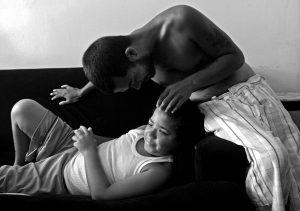 She’s also been following a family of three young siblings whose mother, grandmother and great-grandmother are all in jail. “My story is about who is taking care of the children,” she says. “People have come together, some who aren’t even related to them, to help raise these children. To me, that’s a really important story because I’ve always been fascinated by family, what happens through the generations and what people pass down to their kids.”
She’s also been following a family of three young siblings whose mother, grandmother and great-grandmother are all in jail. “My story is about who is taking care of the children,” she says. “People have come together, some who aren’t even related to them, to help raise these children. To me, that’s a really important story because I’ve always been fascinated by family, what happens through the generations and what people pass down to their kids.”
The main themes Saul plans to address with her photos are homelessness, drug addiction, education, violence and the trauma kids face from that violence – all social issues that greatly affect Camden. Many of those photos are taken in black and white. “Color would just be distracting for tougher subjects,” she says. Uplifting topics, such as the mentors who inspire her, are photographed in color.
Saul recently spent a day riding on a school bus that picked up students from homeless shelters. “I was really struck by the mobility rate at which kids come and go from the schools,” says Saul. “I hear so often about how much money Camden City is spending per pupil and why they aren’t doing better on tests. Poverty makes it really difficult to learn. Kids come to school hungry and are uprooted.”
She also wants to show that not all of Camden’s problems can be blamed on its residents. “Two-thirds to three-quarters of the people that showed up for a needle exchange were white people from the suburbs,” she says. “And the same thing is true for the homeless. A lot of people from the suburbs come to Camden because there are services for the homeless, and it’s known as a place where people can get three meals a day.”
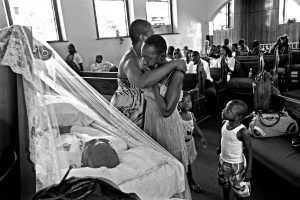 Saul immersed herself in journalism at a young age, helping her mother Louise, a journalist who wrote about civil rights. “My mother was a columnist in central Jersey in the ’60s, and her life was threatened at one point,” recalls Saul. “My parents programmed me to care about social justice. I got into photography to try to change the world a little bit at a time.”
Saul immersed herself in journalism at a young age, helping her mother Louise, a journalist who wrote about civil rights. “My mother was a columnist in central Jersey in the ’60s, and her life was threatened at one point,” recalls Saul. “My parents programmed me to care about social justice. I got into photography to try to change the world a little bit at a time.”
Though Saul’s initial title for her project was “Camden NJ: No Place to Grow Up,” she quickly realized that title was unfair. “Walt Whitman called Camden a city invincible, and I changed it to a spirit invincible,” she says. “The new title, ‘Camden NJ: A Spirit Invincible,’ is more in keeping with my feelings about Camden as a place where there are a lot of really good people trying to live normal lives against really tough odds.”
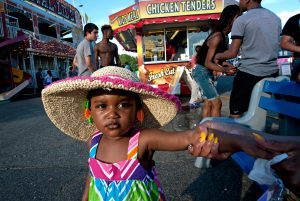 Saul is able to spend the year working on this project because of a fellowship she received from the Alicia Patterson Foundation. “The fellowship has been a tremendous gift at this stage of my career,” says Saul, whose resumé includes a Pulitzer Prize and the World Press Photo Budapest Award for Humanistic Photography, among many other honors. “It’s given me a year of my professional life to follow my heart.”
Saul is able to spend the year working on this project because of a fellowship she received from the Alicia Patterson Foundation. “The fellowship has been a tremendous gift at this stage of my career,” says Saul, whose resumé includes a Pulitzer Prize and the World Press Photo Budapest Award for Humanistic Photography, among many other honors. “It’s given me a year of my professional life to follow my heart.”
The grant provides a $40,000 stipend, which is also being supplemented by The Philadelphia Inquirer to allow Saul to earn her normal salary. When her project is complete next March, she will resume her job at the newspaper but will continue to spend time in Camden with the residents she has come to know and love. “I have this idea of starting a photo workshop for kids in Camden,” she says. “Sometimes as a photojournalist you feel like you are just a voyeur. If I can teach them photography, maybe I can do a tiny bit for them.”

